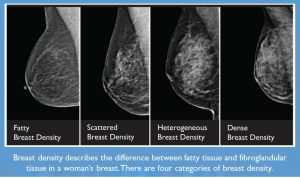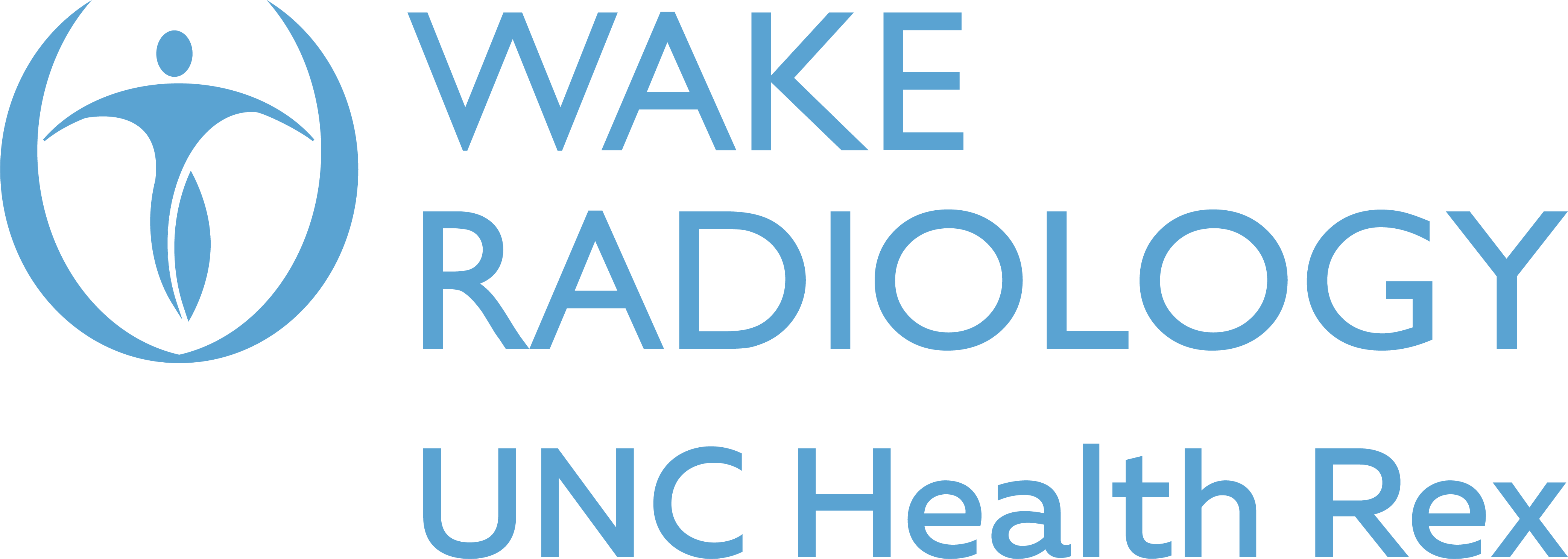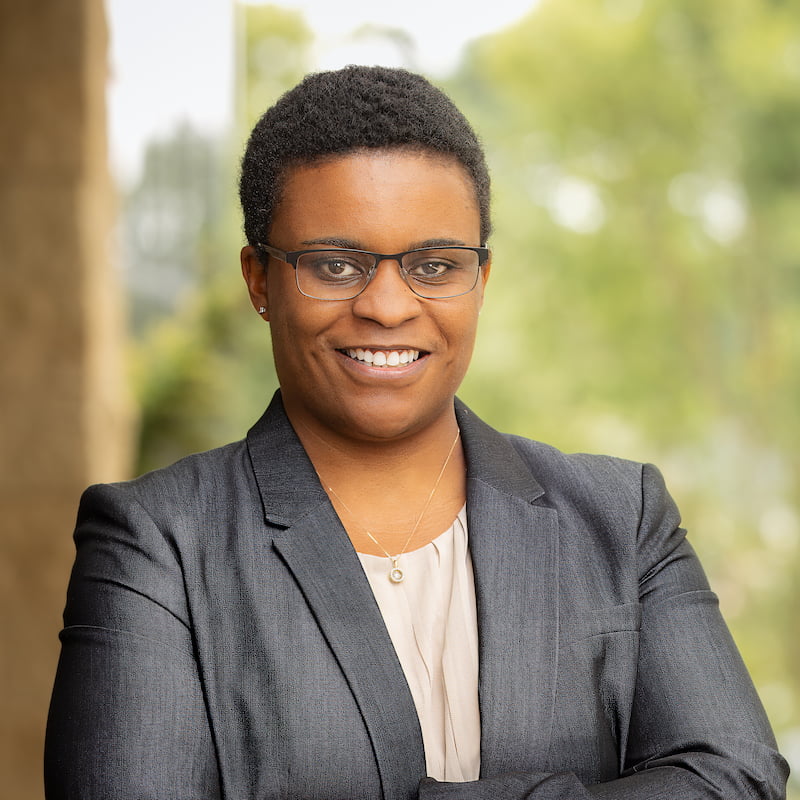A lot starts to change as we age. We have more aches and pains, our eyesight weakens and we notice more fine lines on our hands and face. All of that is normal. For women, so are changes to their breasts. One out of every two women age 40 and over has dense breast tissue and all women experience changes in their breast density as they get older.
What is breast density?
 “Breast density describes how much fatty tissue versus fibroglandular (glandular and connective) tissue is in a woman’s breasts,” says Dr. Siobhan Alexander, a breast imaging radiologist at Wake Radiology UNC REX. “Only a mammogram can determine your breast density. It’s not something you can feel during a physical exam.” A woman has dense breasts if more than half of her breast tissue is made of up of fibroglandular tissue. A North Carolina statute requires that every woman be informed of her breast density as part of her mammogram results.
“Breast density describes how much fatty tissue versus fibroglandular (glandular and connective) tissue is in a woman’s breasts,” says Dr. Siobhan Alexander, a breast imaging radiologist at Wake Radiology UNC REX. “Only a mammogram can determine your breast density. It’s not something you can feel during a physical exam.” A woman has dense breasts if more than half of her breast tissue is made of up of fibroglandular tissue. A North Carolina statute requires that every woman be informed of her breast density as part of her mammogram results.
What causes breast density?
Breast density is often inherited, but other factors like having children, going through menopause or using hormone replacements can change the makeup of breast tissue. Younger women typically have more dense breasts. Hormonal changes associated with menopause can make breast tissue more fatty.
Does breast density increase your cancer risk?
Having dense breasts doesn’t necessarily increase your cancer risk, but it can make breast cancer more difficult to detect. Fibroglandular tissue appears white on a mammogram whereas fatty tissue appears dark gray.
“For women with dense breasts, their normal, background density appears white on their mammogram. Unfortunately, cancer also presents as white areas making it more difficult to detect. It’s a bit like trying to see a polar bear in a snowstorm,” explains Dr. Alexander. “A quality 3D mammogram is currently our best screening tool for women with dense breasts.”
Why is a 3D mammogram better?
A 3D mammogram uses an x-ray machine that makes a sweeping arch over the breast, lasting only a couple more seconds than a traditional scan. It captures images of each breast tissue layer to create a large composite of images, sometimes more than 100 per view. A traditional 2D mammogram provides a total of four images (two from each breast) and presents the breast layers overlapped in the images.
A 3D mammogram is important for women of all breast densities because it:
- Provides greater clarity and detail of the breast tissue
- Improves breast cancer detection at the earliest possible stage when it’s most treatable
- Reduces callback rates for additional imaging exams
Can artificial intelligence tools help patients with dense breasts?
“We think our artificial intelligence (AI) tools benefit all women including those with dense breasts,” says Dr. Alexander.
Wake Radiology UNC REX is the first outpatient imaging provider in the Triangle to use AI technology with 3D mammography. The AI tools work in the background and mark areas of possible concern while a breast imaging radiologist reads a patient’s images. “Once we’ve finished our interpretation, we review those marks to see if anything needs a closer look,” says Alexander. AI technology is a useful tool for evaluating changes in breast density and potential abnormalities.
Dr. Alexander also recommends women with dense breasts visit an imaging office that’s designated as a Breast Imaging Center of Excellence (BICOE) for their next mammogram. This ensures patients receive a quality 3D mammogram, prior images are reviewed, and that the office has met rigorous safety and quality standards.
All of Wake Radiology UNC REX’s breast imaging offices are designated as BICOE. The practice offers 3D mammography with AI technology at all 13 of its locations throughout the Triangle.

